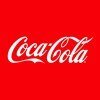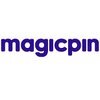Filter interviews by
Nutech Contracts Project Engineer Interview Questions and Answers
Nutech Contracts Project Engineer Interview Experiences
1 interview found
I applied via Referral and was interviewed in Aug 2022. There were 2 interview rounds.

(1 Question)
- Q1. Related projects execution
Interview Preparation Tips
Top trending discussions






Interview questions from similar companies

I applied via Naukri.com and was interviewed in Aug 2023. There were 4 interview rounds.

(3 Questions)
- Q1. Tell me about yourself?
- Q2. Why do we hire you?
- Q3. What salary did you expect
(3 Questions)
- Q1. Tell me about your job profile? Roles Responsibilities.
- Q2. Tell be about manufacturing process which you have been seen in your career
- Q3. What are core tools of AIAG?
- Ans.
Core tools of AIAG include FMEA, PPAP, MSA, SPC, and APQP.
FMEA (Failure Mode and Effects Analysis) is used to identify and prioritize potential failure modes in a process.
PPAP (Production Part Approval Process) is used to ensure that suppliers meet customer requirements.
MSA (Measurement Systems Analysis) is used to assess the quality of measurement systems.
SPC (Statistical Process Control) is used to monitor and contro...
(3 Questions)
- Q1. What are yours failures?
- Ans.
I have experienced failures in project deadlines, communication, and technical solutions.
Missed project deadlines due to underestimating tasks
Miscommunication with team members leading to misunderstandings
Implemented technical solutions that did not meet requirements
- Q2. What are your achievements?
- Q3. What is heat treatment process
- Ans.
Heat treatment process is a method used to alter the physical and sometimes chemical properties of a material through heating and cooling.
Involves heating the material to a specific temperature
Holding it at that temperature for a set amount of time
Then cooling it at a controlled rate
Can be used to increase hardness, improve machinability, or enhance other properties
Common techniques include annealing, quenching, temper

I applied via Naukri.com and was interviewed in Dec 2023. There were 2 interview rounds.
(2 Questions)
- Q1. Tell me About yourself
- Q2. Where you see yourself in next 3 years
(3 Questions)
- Q1. Tell me previous jobs profile
- Q2. Tell me your previous responsibilities
- Q3. Tell me your achievements

I appeared for an interview before Mar 2024, where I was asked the following questions.
- Q1. Why do you want to work here
- Q2. What are your future plans

Interview Questionnaire
4 Questions
- Q1. What is 7qc tool, why we use it ?
- Ans.
7QC tools are a set of quality control tools used to identify and solve quality problems in manufacturing processes.
7QC tools include Pareto chart, cause-and-effect diagram, control chart, histogram, scatter diagram, flowchart, and check sheet.
They help in identifying and analyzing quality problems, determining root causes, and implementing corrective actions.
They are used to improve product quality, reduce defects, an...
- Q2. What ia PPAP and APQP?
- Ans.
PPAP and APQP are quality management systems used in manufacturing.
PPAP stands for Production Part Approval Process and is used to ensure that manufactured parts meet customer requirements.
APQP stands for Advanced Product Quality Planning and is used to plan and manage the design and development of new products.
Both systems are commonly used in the automotive industry but can be applied to other manufacturing industrie...
- Q3. What is pareto?
- Ans.
Pareto is a principle that states 80% of effects come from 20% of causes.
Also known as the 80/20 rule
Used in business to identify the most important factors
Can be applied to various fields such as economics, engineering, and social sciences
Example: 80% of a company's profits come from 20% of its customers
- Q4. How to calculate the OEE?
- Ans.
OEE can be calculated by multiplying Availability, Performance, and Quality percentages.
Calculate Availability by dividing Operating Time by Planned Production Time.
Calculate Performance by dividing Actual Production by Maximum Production.
Calculate Quality by dividing Good Units by Total Units Produced.
Multiply Availability, Performance, and Quality percentages to get OEE.

I applied via Job Portal and was interviewed in May 2023. There were 3 interview rounds.

About your qualification and knowledge.
(3 Questions)
- Q1. Talk about your resume showin the experience.
- Q2. Tell me about yourself and general .
- Q3. Knowledge of experience
Interview Preparation Tips

Quality Engineer Interview Questions & Answers
Global Autotechposted on 22 Aug 2023
I applied via Naukri.com and was interviewed before Aug 2022. There were 3 interview rounds.

(1 Question)
- Q1. 7Qc Tools 8D X- Bar Chart Casting And Machining Defects About Your Self Difference Bt Accuracy and Precision About Gd&T Role And Responsibility Of Your Current Company
(1 Question)
- Q1. Why You Want to Join This Company And Last One Is How Much You Expected Ctc

I applied via Naukri.com and was interviewed in Apr 2023. There were 3 interview rounds.
(2 Questions)
- Q1. Tell me more about yourself
- Ans.
I am a Quality Engineer with experience in ensuring product quality and implementing quality control processes.
Experienced in conducting quality audits and inspections
Proficient in using quality tools and techniques such as Six Sigma and Lean
Skilled in analyzing data and identifying areas for improvement
Strong knowledge of quality standards and regulations
Effective communicator and collaborator in cross-functional team
- Q2. What have you done
- Ans.
As a Quality Engineer, I have implemented various quality control measures and conducted audits to ensure product compliance.
Implemented quality control processes to monitor and improve product quality
Conducted audits to identify non-conformities and implement corrective actions
Collaborated with cross-functional teams to develop and implement quality standards
Performed root cause analysis and implemented preventive mea...
(1 Question)
- Q1. Least count of micrometre
- Ans.
The least count of a micrometer is the smallest measurement that can be read on the scale.
The least count of a micrometer is determined by the number of divisions on the scale and the pitch of the screw.
For example, a micrometer with 50 divisions on the scale and a pitch of 0.5 mm would have a least count of 0.01 mm.
The least count is important for accurate measurements and should be taken into consideration when using
(1 Question)
- Q1. What is Quality control function
- Ans.
Quality control function involves monitoring and testing products to ensure they meet the required standards.
Quality control function involves inspecting products to ensure they meet the required specifications
It involves testing products to ensure they function as intended
It involves monitoring the production process to identify and correct any defects
Examples include checking the weight and dimensions of a product, t...

I applied via Company Website and was interviewed before Jun 2021. There were 4 interview rounds.

(2 Questions)
- Q1. Personal interview in hr department
- Q2. Communication easy done in English
(1 Question)
- Q1. Qualtion on All semisters subject done in B-tech, IQ level test.
(1 Question)
- Q1. Qualtion on previous experience and documents done in previous organization.
Interview Preparation Tips

I applied via Recruitment Consulltant and was interviewed in Mar 2022. There were 4 interview rounds.

Personality, Good communication skill required
(1 Question)
- Q1. What is SPC, CP&CPK, CAPA, 7QC TOOL, Basic of GD&T.
- Ans.
SPC, CP&CPK, CAPA, 7QC TOOL, Basic of GD&T are quality control tools used in manufacturing and engineering.
SPC (Statistical Process Control) is a method of monitoring and controlling a process to ensure it operates within its specified limits.
CP (Process Capability) and CPK (Process Capability Index) are measures of a process's ability to produce parts within specification limits.
CAPA (Corrective and Preventive Action)...
(1 Question)
- Q1. What is MSA, Kaizen, why-why analysis,
- Ans.
MSA is Measurement System Analysis, Kaizen is continuous improvement, Why-Why analysis is a root cause analysis technique.
MSA is used to evaluate the measurement system's ability to accurately and precisely measure a product or process.
Kaizen is a Japanese term for continuous improvement, it involves making small incremental changes to improve efficiency and quality.
Why-Why analysis is a root cause analysis technique u...
Interview Preparation Tips
Nutech Contracts Interview FAQs
Tell us how to improve this page.
Interview Questions for Popular Designations
- Project Manager Interview Questions
- Project Coordinator Interview Questions
- Project Lead Interview Questions
- Project Associate Interview Questions
- Senior Project Manager Interview Questions
- Senior Project Engineer Interview Questions
- Assistant Project Manager Interview Questions
- Project Engineer - Civil Interview Questions
- Show more
Interview Questions from Similar Companies
Nutech Contracts Project Engineer Reviews and Ratings
based on 6 reviews
Rating in categories
|
Project Engineer
19
salaries
| ₹2.2 L/yr - ₹5.2 L/yr |
|
Electrical Project Engineer
14
salaries
| ₹2 L/yr - ₹6.2 L/yr |
|
Project Manager
9
salaries
| ₹6 L/yr - ₹8.4 L/yr |
|
Safety Officer
8
salaries
| ₹2 L/yr - ₹4.2 L/yr |
|
Electrical Engineer
8
salaries
| ₹2.5 L/yr - ₹5.8 L/yr |

Coca-Cola Company

Dhoot Transmission

Apotex Research

Athena BPO
- Home >
- Interviews >
- Nutech Contracts Interview Questions >
- Nutech Contracts Project Engineer Interview Questions












